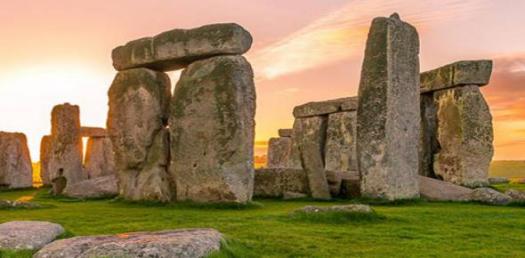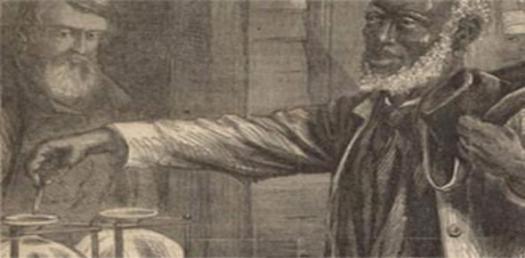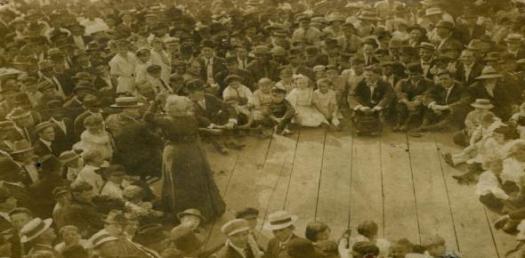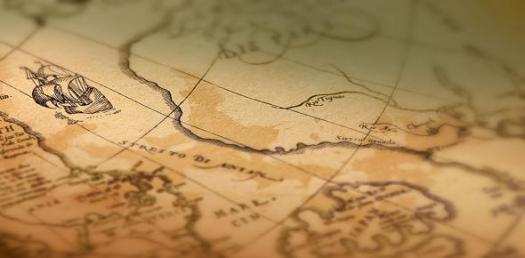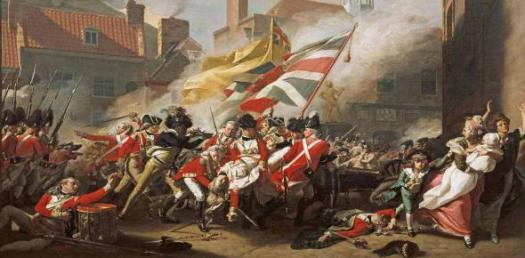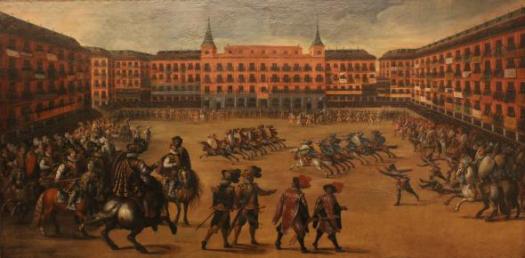Only A 10th Grade Student Can Pass This History Quiz!
-
Which discipline is especially helpful in dealing with buried sites and objects?
-
Geography
-
Archeology
-
Anthropology
-
Dermatology
-
History refers to the academic discipline which uses a narrative to examine and explain plainly a sequence of past occurrence, and primarily determine the patterns of cause and effect that determine such occurrences. History is a broad topic which basically takes us back to basis of lots of beliefs from the prehistoric age. Try this quiz to test how good you have become in History as a 10th grade History student.

Quiz Preview
- 2.
Who is considered the father of History?
-
Bhudda
-
Herodotus
-
Bendetto Croce
-
Cephas
Correct Answer
A. HerodotusExplanation
Herodotus is considered the father of History because he was the first historian to systematically collect and analyze information about the past. His work, "The Histories," is considered the first major historical account and covers a wide range of topics including politics, wars, and culture. Herodotus pioneered the use of critical inquiry, interviews, and firsthand observations to gather information, setting the foundation for the study of history as we know it today. His contributions laid the groundwork for future historians and his methods are still influential in the field of history.Rate this question:
-
- 3.
What is another name for the Paleolithic age?
-
Ice age
-
Bronze Age
-
Stone Age
-
Iron Age
Correct Answer
A. Stone AgeExplanation
The Paleolithic age is commonly referred to as the Stone Age. This era is characterized by the use of stone tools and the development of early human societies. The term "Stone Age" signifies the importance of stone tools in this period, as they were the primary materials used for hunting, gathering, and creating various implements. The other options, such as Ice Age, Bronze Age, and Iron Age, refer to different periods in human history with distinct characteristics and technological advancements.Rate this question:
-
- 4.
When did the prehistoric act in Europe begin?
-
Old stone age
-
Late Ice age
-
Early bronze age
-
Early Iron age
Correct Answer
A. Old stone ageExplanation
The correct answer is Old stone age. The prehistoric era in Europe began during the Old Stone Age, also known as the Paleolithic period. This period lasted from around 2.6 million years ago until about 10,000 years ago. It was characterized by the use of stone tools and the emergence of early human species. During this time, humans were primarily hunter-gatherers, relying on hunting animals and gathering wild plants for survival. The Old Stone Age marked the earliest known period of human history and laid the foundation for the development of civilizations in later ages.Rate this question:
-
- 5.
Which dated location residence represents the currently earliest known and reliable location for more than a single generation in Spain?
-
Sima de las Palomas
-
Sidrón Cave
-
The karstic region of the Atapuerca Mountains
-
Orce
Correct Answer
A. The karstic region of the Atapuerca MountainsExplanation
The karstic region of the Atapuerca Mountains represents the currently earliest known and reliable location for more than a single generation in Spain. This region has yielded significant archaeological and paleontological findings, including the remains of early hominins such as Homo antecessor. These discoveries have provided valuable insights into the human occupation of the Iberian Peninsula and have pushed back the known human presence in the region to over a million years ago. The Atapuerca Mountains have thus become a crucial site for understanding human evolution and prehistoric cultures in Spain.Rate this question:
-
- 6.
Which of these is not a method of organizing History?
-
Cultural
-
Chronological
-
Social
-
Thematical
Correct Answer
A. SocialExplanation
Social is not a method of organizing history because it does not focus on the sequence of events or the development of ideas over time. Instead, it emphasizes the interactions, relationships, and structures within a society. While cultural, chronological, and thematical methods categorize historical events and phenomena based on cultural aspects, time periods, and themes, respectively, the social method examines how societies function and how individuals and groups interact within them.Rate this question:
-
- 7.
The Predynastic period in Egypt is generally divided into which of these?
-
Early Mesolithic era
-
Stone age
-
Cultural Era
-
Settlement of early men
Correct Answer
A. Cultural EraExplanation
The correct answer is "Cultural Era." The Predynastic period in Egypt is divided into different cultural eras based on the development and characteristics of the societies that existed during that time. This division helps historians and archaeologists understand the cultural and social changes that took place in Egypt before the emergence of the dynastic period.Rate this question:
-
- 8.
Homo sapiens subsequently proceeded to populate the entire European continent during which of these ages?
-
Neolithic
-
Paleolithic
-
Mesolithic
-
Epipaleolithic
Correct Answer
A. MesolithicExplanation
During the Mesolithic age, Homo sapiens migrated and populated the entire European continent. The Mesolithic period, also known as the Middle Stone Age, occurred between the Paleolithic and Neolithic ages. This period was characterized by the development of more advanced tools and technologies, as well as the transition from a nomadic lifestyle to a more settled existence. The migration and settlement of Homo sapiens across Europe during this time marked a significant milestone in human history.Rate this question:
-
- 9.
Who revolutionalised the study of history in the 20th century?
-
Braudel Frank Dembele
-
Franklin Bauer
-
Herodotus
-
Fernand Braudel
Correct Answer
A. Fernand BraudelExplanation
Fernand Braudel is the correct answer because he revolutionized the study of history in the 20th century. Braudel was a French historian who introduced the concept of "total history," which emphasized the importance of studying the long-term structures and processes that shape historical events. He believed that history should not only focus on political events and individuals but also consider economic, social, and geographical factors. Braudel's approach had a significant impact on the field of history, leading to the development of new methodologies and perspectives in historical research.Rate this question:
-
- 10.
Which of these is not considered by mordern historians when compiling a research?
-
Date
-
Time
-
Analysis
-
Credibility
Correct Answer
A. TimeExplanation
Modern historians consider various factors when compiling research, such as the date, analysis, and credibility of sources. However, time is not typically a factor that historians consider. Instead, they focus on the historical context and events, analyzing how they relate to each other and the overall narrative. Time itself is a constant and does not require separate consideration in the research process. Therefore, time is not considered by modern historians when compiling research.Rate this question:
-
Quiz Review Timeline (Updated): Oct 23, 2024 +
Our quizzes are rigorously reviewed, monitored and continuously updated by our expert board to maintain accuracy, relevance, and timeliness.
-
Current Version
-
Oct 23, 2024Quiz Edited by
ProProfs Editorial Team -
Apr 20, 2019Quiz Created by
Gregorynaomi
Simple History Test For Kids! Quiz
Knowing our past is very important, and just like that, knowing the past of the world that we are living in, is also very important. This is a simple history test for kids. Just...
Questions:
10 |
Attempts:
1293 |
Last updated:
Mar 22, 2023
|
History And Analysis Q & As
Take this ultimate history and analysis Q & A to see how much you can remember from class. (Note: Try to answer all these questions without referring to class notes or...
Questions:
10 |
Attempts:
134 |
Last updated:
Mar 21, 2023
|
7 Th HISTORY PAPER NO-3
ज्ञान वाढवा -प्रश्न सोडवा
संकल्पना -प्रदीप भाकरे
जि.प.शाळा...
Questions:
10 |
Attempts:
36 |
Last updated:
Sep 04, 2023
|
Can You Answer These Historical Questions? Part- II
History is a blanket term that pertains to past events and the memory, discovery, collection, organization, presentation, and interruption of information about these events....
Questions:
15 |
Attempts:
695 |
Last updated:
Nov 16, 2023
|
Test Your History Knowledge: 7th Grade Quiz!
Rules are needed in any community in order to ensure that it runs smoothly. A good example of this are the school rules. These may sometimes seem pointless but they all have a...
Questions:
10 |
Attempts:
333 |
Last updated:
Oct 24, 2024
|
Expert Level: History Quiz For 5th Grade
History is a term used in describing the study of past events like memories, documentation, presentations, and illustrations. History experts have used their knowledge in...
Questions:
10 |
Attempts:
454 |
Last updated:
Oct 22, 2024
|
 Back to top
Back to top



